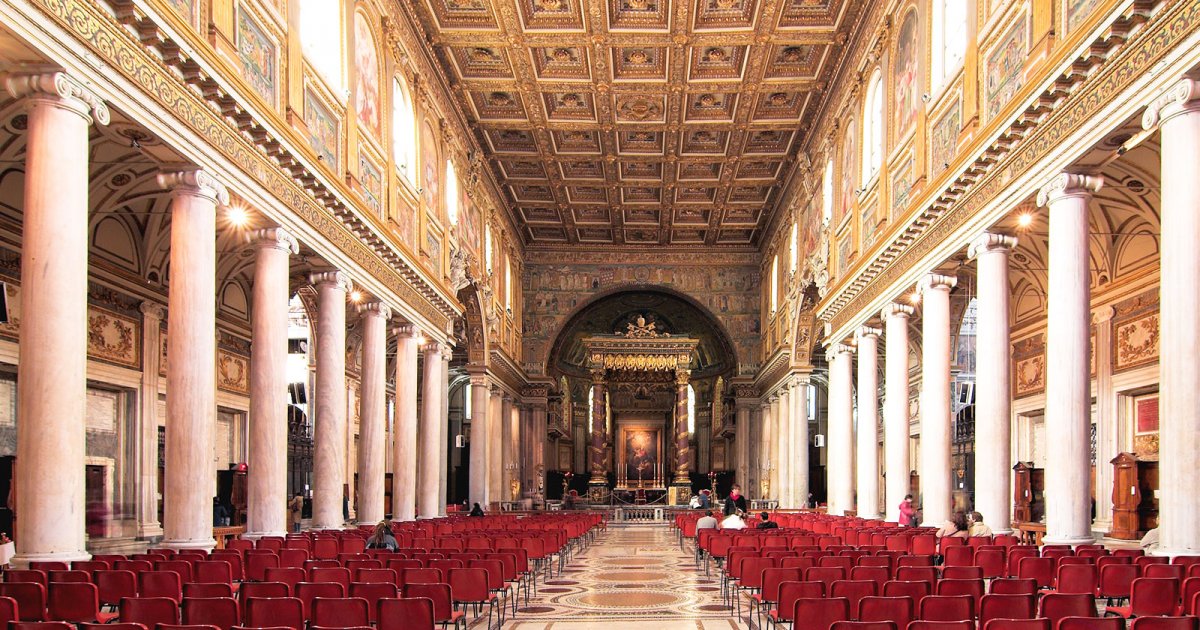CHURCH OF SANTA MARIA MAGGIORE, Exterior Interior
 Language: English / USA
Language: English / USA
Before entering the church, take a last glance at its beautiful eighteenth-century façade that perfectly mirrors the sober taste of Pope Benedict XIV Lambertini; this façade marks the end of the long Baroque age in Rome. Look how elegant the shining multicolored and golden tiles of the ancient mosaics are as they shimmer through the loggia! The bell tower, which dates back to the 14th century, is also noteworthy because it is the tallest in the city and has remarkable decorations.
Look closely at the late-thirteenth-century mosaics of the façade: they already show a profound understanding of Giotto's innovations and his way of rendering depth in three-dimensional spaces and architectures. The mosaics depict episodes from the life of Pope Liberius, who founded the basilica.
And now go ahead and enter the church.
As I mentioned in the previous file, the spacious and solemn interior still reflects the architectural layout of the early centuries of Christianity. The lively mosaic panels depicting scenes of Christ's life that you can see at the top of the walls in the central nave are from the same, early-Christian period.
Towards the back of the nave you can enter two large, densely decorated chapels with domes, which contain papal tombs and other prized sculptures. The right one was built in the second half of the sixteenth century and is called the "Sistine Chapel" because it contains the tomb of Pope Sixtus V, but don't confuse it with the much more famous Sistine Chapel in the Vatican! The group of marble statues you see under the altar is a 14th-century work by Arnolfo di Cambio that depicts The Adoration of the Magi.
On the opposite side is the Pauline Chapel that contains Pope Paul V Borghese's tomb. It was completed at the beginning of the 1600s and was frescoed by Guido Reni.
I also recommend stopping in front of the mosaics at the apse, which were made at the end of the 1200s; you might be able to sense that they have a new style for that time, which probably comes from the careful study of classicism. For example, look at how sweetly Christ embraces the Madonna, who's sitting with him on a large throne.
FUN FACT: take a look at the beautiful carved ceiling of the church, because it has an interesting peculiarity. It dates back to the early 1500s and is said to have been coated with the first gold that had come from America, kindly given to the church by the king of Spain.
And with this we have finished our tour of the Basilica of Santa Maria Maggiore. MyWoWo thanks you for staying with us, and will see you at the next Wonder of the World!



